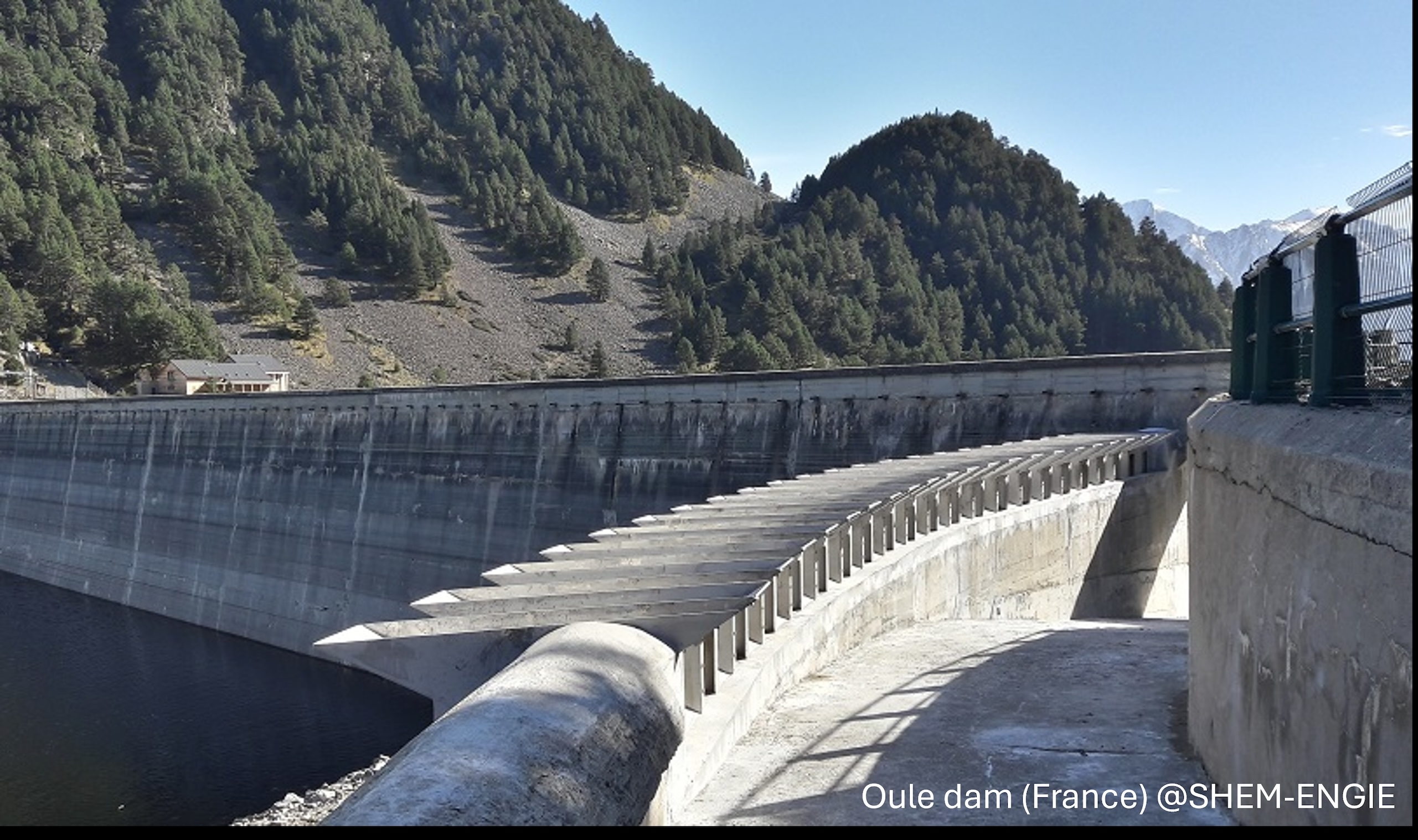Location
Atlanta, GA
Presentation Type
Presentation
Start Date
10-7-2025 4:35 PM
Description
Piano Key Weirs (PKWs) enhance spillway capacity and induce complex flow patterns around their inlet and outlet keys. This study investigates the flow near a Type-A PKW using Computational Fluid Dynamics (CFD). Velocity fields in the vicinity of the PKW keys were analyzed for different discharges and validated with the experimental results. As flow approaches the inlet key, the streamwise, vertical, and lateral velocity components increase significantly, with the highest velocities near the inlet key. However, near the outlet key the streamwise velocity decreases while the vertical and lateral components increase. For all the discharges, the maximum velocity was observed in the inlet key region. Turbulent kinetic energy (TKE) was also found to be the highest downstream of the inlet key. The numerical predictions agree well with experimental measurements, demonstrating the reliability of the model. This study enhances understanding of PKW hydraulics, offering insights into optimizing weir performance and mitigating erosion risks.
Included in
Investigation of Flow Field Near a Type-A Piano Key Weir
Atlanta, GA
Piano Key Weirs (PKWs) enhance spillway capacity and induce complex flow patterns around their inlet and outlet keys. This study investigates the flow near a Type-A PKW using Computational Fluid Dynamics (CFD). Velocity fields in the vicinity of the PKW keys were analyzed for different discharges and validated with the experimental results. As flow approaches the inlet key, the streamwise, vertical, and lateral velocity components increase significantly, with the highest velocities near the inlet key. However, near the outlet key the streamwise velocity decreases while the vertical and lateral components increase. For all the discharges, the maximum velocity was observed in the inlet key region. Turbulent kinetic energy (TKE) was also found to be the highest downstream of the inlet key. The numerical predictions agree well with experimental measurements, demonstrating the reliability of the model. This study enhances understanding of PKW hydraulics, offering insights into optimizing weir performance and mitigating erosion risks.


